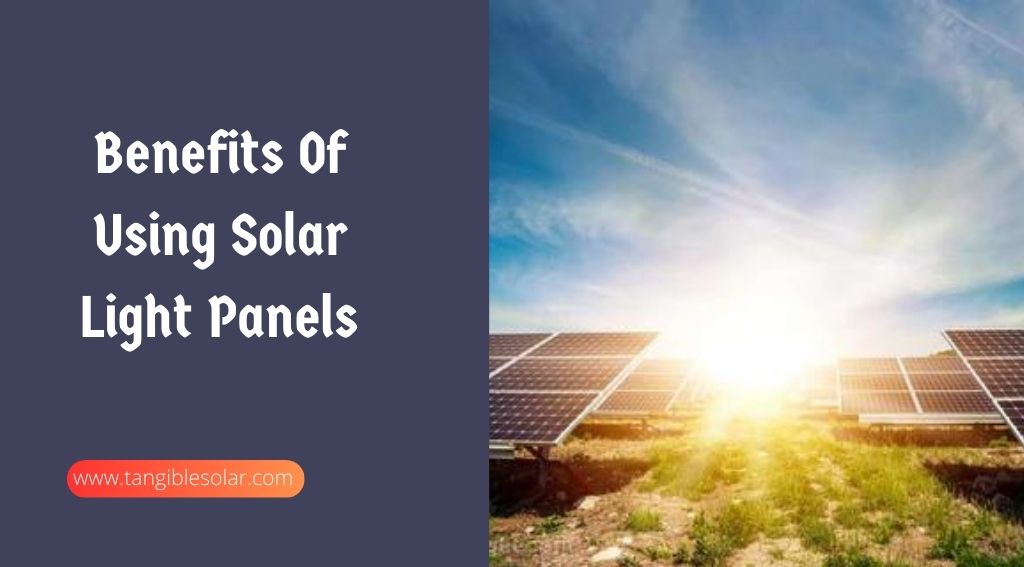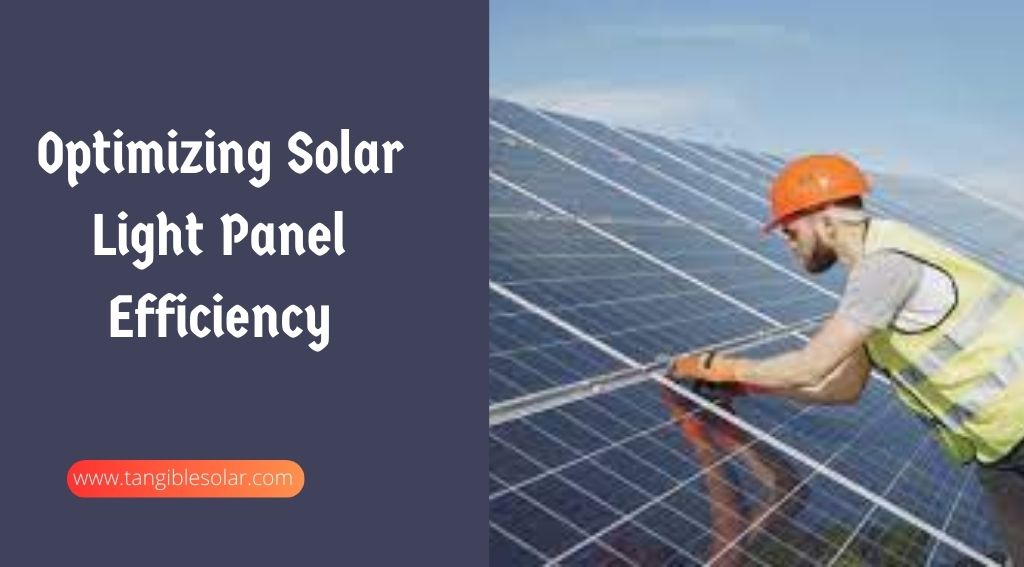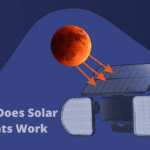How to Restore Solar Light Panels?
To restore solar light panels, clean them regularly and replace any damaged or worn-out components. Neglecting maintenance can lead to a decrease in the efficiency and effectiveness of the panels over time, so it’s important to keep them in good condition.
We will provide you with some valuable tips on how to restore your solar light panels, ensuring they continue to function optimally and provide you with the energy you need. By following these simple steps, you can extend the lifespan of your solar panels and maximize their performance.
So, let’s get started!
Understanding How to Restore Solar Light Panels
Solar light panels are an essential component of solar lighting systems. These panels are responsible for capturing the sunlight and converting it into electrical energy, which is further used to power the lights. Understanding how solar light panels function and their benefits can help you make informed decisions when it comes to choosing and maintaining solar-powered lights.
What are solar light panels?
Solar light panels, also known as solar panels or photovoltaic (PV) panels, are devices that consist of multiple interconnected solar cells. These cells are made from semiconductor materials, such as silicon, which have the ability to generate electricity when exposed to sunlight. The panels are designed to absorb sunlight and convert it into direct current (DC) electricity.
How Do Solar Light Panels Work?
Solar light panels work by utilizing the photovoltaic effect. When the sunlight falls on the solar cells, the photons contained in the sunlight excite the electrons in the semiconductor material. This excitation causes a flow of electrons, creating an electric current. The electric current is then directed to the battery or power storage system, where it is stored for later use. The stored energy is then used to power the solar lights, providing illumination during the night or in areas where there is limited access to electricity.
Benefits Of Using Solar Light Panels

Understanding the underlying concepts and benefits of solar light panels is crucial for individuals seeking sustainable and energy-efficient lighting solutions. By harnessing the power of the sun, these panels provide a reliable, cost-effective, and environmentally friendly way to brighten up outdoor spaces.
Signs Of Wear And Damage
Regular maintenance and inspection of solar light panels are crucial to ensure their optimal functionality and longevity. By being aware of the signs of wear and damage, you can address these issues promptly and effectively. This section will explore the common signs of wear and tear, provide guidance on identifying damage, and emphasize the importance of regular maintenance and inspection.
Common Signs Of Wear And Tear
Over time, solar light panels may display visible indicators of wear and tear. By detecting these signs early on, you can prevent further damage and extend the lifespan of your solar panels. Here are some common signs to look out for:
- Faded or discolored surface: This could indicate prolonged exposure to sunlight, weathering, or aging of the panel materials.
- Cracked or chipped glass: Physical impact or extreme weather conditions can lead to cracked or chipped glass. Such damage compromises the panel’s efficiency and may require immediate attention.
- Loose connections: If you notice loose or damaged wiring connections, it can interfere with the proper functioning of the solar panel system. Regularly checking and tightening the connections can help prevent potential issues.
- Diminished light output: If your solar light panel gradually produces less light compared to its initial performance, it may indicate wear and decreased efficiency. This could result from accumulated dust, dirt, or reduced battery performance.
- Corrosion or rusting: Exposure to moisture or harsh outdoor conditions can cause corrosion or rusting of the panel frame or components. Regular inspection and addressing rust or corrosion promptly can prevent further damage.
Identifying Damage To Solar Light Panels
In addition to common signs of wear and tear, it is important to be able to identify specific types of damage that may affect the performance of solar light panels. Here are a few key indicators:
- Water ingress: Wet or damp areas within the panel enclosure or signs of moisture on the surface may suggest water ingress. This can harm the sensitive electronics within the panels and impair their functionality.
- Burn marks or discoloration: Burn marks or discoloration on the panel surface may indicate overheating or electrical malfunctions. These issues should be promptly addressed to ensure safety and prevent further damage.
- Broken junction box: The junction box is an important component of the solar panel system. If it is cracked, broken, or shows signs of melting, it poses a risk and should be replaced as soon as possible.
- Irregular power output: An unexpected fluctuation in power output or complete lack of functionality may indicate a fault within the solar panel system. Diagnosing and resolving the issue promptly will prevent further complications.
Importance Of Regular Maintenance And Inspection
To ensure the optimal performance and longevity of solar light panels, regular maintenance and inspection are essential. Here are a few reasons why:
- Preventive maintenance: Regular inspection allows for the identification and timely resolution of potential issues, preventing small problems from escalating and causing significant damage.
- Maximize energy efficiency: By keeping the panels clean, free of debris, and in optimal condition, you can ensure maximum energy production and efficiency.
- Extend lifespan: Proper maintenance helps prolong the lifespan of solar light panels, saving you money in the long run by reducing the need for replacements.
- Promote safety: Regular checks can help identify and address any electrical or structural safety concerns associated with the solar panel system.
Restoring Solar Light Panels
How to restore solar light panels is an excellent eco-friendly solution for outdoor lighting. However, over time they may start to lose efficiency due to various factors such as exposure to weather elements and accumulation of debris. Restoring solar light panels can not only extend their lifespan but also ensure optimal performance. In this post, we will explore the essential steps to restore solar light panels effectively.
Why Do My Solar Lights Turn Off At Night
Assessing The Condition Of Solar Light Panels
Before embarking on the restoration process, it is crucial to assess the condition of your solar light panels. This step allows you to identify any visible damages or issues that may require attention. Here’s how you can evaluate the condition of your solar light panels:
- Check for physical damage: Inspect the panels for any cracks, corrosion, or loose connections. Physical damage can directly impact the effectiveness of the panels.
- Measure performance: Use a solar panel tester or multimeter to measure the voltage and current output of the panels. This step helps identify any efficiency losses or weak spots.
- Examine the wiring: Ensure that the wiring connecting the panels to the battery and light fixture is intact and properly insulated. Faulty wiring can lead to power disruptions and reduced functionality.
Cleaning And Removing Debris
One of the most common issues that hamper solar light panel performance is the accumulation of dirt, dust, leaves, and other debris. Regular cleaning is essential to maintain optimal functionality. Here’s how you can effectively clean and remove debris from your solar light panels:
- Turn off the solar light panel system: Before starting the cleaning process, ensure the panels are switched off. This step prevents any electrical accidents.
- Gently brush off loose debris: Use a soft-bristle brush or cloth to remove any loose dirt or leaves from the surface of the solar panels. Avoid using abrasive materials that could scratch the panels.
- Clean with a mild detergent solution: Mix a small amount of mild detergent with water. Use a soft cloth or sponge to wipe the panels gently. Rinse with clean water afterward to remove any soap residue.
- Dry the panels: Allow the panels to air dry completely or use a clean, lint-free cloth to remove any remaining moisture. Ensure the panels are completely dry before turning the system back on.
Repairing Or Replacing Broken Components
If you notice any broken or malfunctioning components during the assessment, it is crucial to repair or replace them promptly. Here are some key components to check and address:
- Battery: Assess the condition of the battery and check for any leaks or corrosion. If needed, replace the battery to ensure efficient energy storage.
- Light fixture: Inspect the light fixture to ensure it is intact and functioning correctly. Replace any damaged or non-working bulbs or LEDs.
- Solar charge controller: Examine the charge controller for any signs of damage or malfunction. If necessary, repair or replace the controller to regulate the charging process properly.
- Wiring and connectors: Check the wiring and connectors for any loose connections or frayed wires. Replace or repair as needed to maintain a reliable electrical flow.
- Mounting hardware: Inspect the mounting hardware and brackets to ensure they are securely attached. Tighten or replace any loose or damaged components.
By following these steps to assess the condition, clean, and repair your solar light panels, you can effectively restore their performance and ensure they continue to provide reliable and renewable energy for your outdoor lighting needs.
Optimizing Solar Light Panel Efficiency

Positioning And Placement For Maximum Sunlight Exposure
To optimize the efficiency of your solar light panels, it is crucial to consider their positioning and placement. Proper exposure to sunlight directly impacts the performance and effectiveness of these solar-powered devices. When installing solar light panels, ensure they are positioned in areas with maximum sunlight exposure throughout the day. This means avoiding shading from trees, buildings, or any other obstruction that may limit the panel’s access to direct sunlight.
Moreover, the angle of inclination plays a significant role in the amount of sunlight the panels receive. A general rule of thumb is to orient the solar light panels towards the south if you are located in the northern hemisphere or towards the north if you are in the southern hemisphere. This optimal positioning will allow the panel to capture the most sunlight possible, maximizing its efficiency and overall performance.
Upgrading Outdated Technology
Outdated technology can hinder the efficiency of your solar light panels. If you have been using the same solar light panels for many years, it may be time to consider upgrading to newer models. Technological advancements in solar power have led to the development of more efficient panels that can generate greater amounts of energy from sunlight.
When upgrading, look for solar light panels that use advanced photovoltaic cells with higher conversion rates. These modern panels can harvest more energy from sunlight, translating into better lighting performance during the night. Additionally, consider the wattage of the panels, as higher-wattage versions tend to offer improved efficiency and brighter illumination for your outdoor spaces.
Enhancing Performance Through Proper Maintenance
Regular maintenance plays a vital role in enhancing the performance and longevity of solar light panels. Over time, dust, dirt, or debris can accumulate on the panel’s surface, reducing its ability to absorb sunlight effectively. To ensure optimal efficiency, it is essential to clean the panels periodically.
When cleaning the panels, use a soft cloth or sponge and a mild cleaning solution to gently wipe away any dirt or grime. Avoid using abrasive materials that could scratch the panel’s surface. Additionally, inspect the panels for any signs of damage, such as cracks or loose connections, and address them promptly to maintain their efficiency.
Furthermore, keep an eye on the surrounding vegetation or objects that may block sunlight or cast shadows on the panels as they grow or move. Regularly trim nearby trees and plants to prevent obstructing sunlight from reaching the panels.
Long-term Maintenance Tips
Proper long-term maintenance is essential to ensure the longevity and optimal performance of your solar light panels. By following these routine cleaning and inspection practices, monitoring energy production and storage, as well as troubleshooting common issues, you can keep your solar light panels in top condition and maximize their efficiency.
Routine Cleaning And Inspection
To keep your solar light panels operating at their best, it’s crucial to perform regular cleaning and inspections. Here are some key steps to follow:
- Remove debris: Start by removing any accumulated debris, such as leaves or dirt, from the surface of the panels. This can be done using a soft brush or cloth. Avoid using abrasive materials that could damage the panels.
- Clean with soapy water: Mix a gentle soap solution with water and use it to clean the panels thoroughly. Gently scrub the surface using a soft brush or cloth, ensuring all dirt and grime are removed.
- Rinse: Rinse the panels with clean water to remove any soap residue. This step is important to prevent any build-up that could affect the panels’ performance.
- Inspect for damage: After cleaning, carefully inspect the panels for any signs of damage, cracks, or loose connections. If any issues are detected, they should be addressed promptly to prevent further damage.
Monitoring Energy Production And Storage
Monitoring the energy production and storage of your solar light panels allows you to assess their performance and identify any potential issues. Here’s how you can effectively monitor these aspects:
- Utilize a monitoring system: Invest in a monitoring system that provides real-time data on the energy production and storage of your solar light panels. This can help you track performance, detect any anomalies, and optimize energy usage.
- Regularly check production levels: Keep an eye on the energy production levels displayed by your monitoring system. Sudden drops or inconsistencies may indicate a problem that requires attention.
- Monitor battery charge: If your solar light panels come with battery storage, regularly monitor the battery charge to ensure it remains at an optimal level. A full battery ensures uninterrupted power supply during periods of low sunlight.
- Record and analyze data: Maintain a record of energy production and storage data over time. Analyzing this information can help identify trends, patterns, and potential areas of improvement.
Troubleshooting Common Issues
While solar light panels are generally low-maintenance, occasional issues may arise. Knowing how to troubleshoot common problems ensures minimal disruption to their performance. Here are some troubleshooting tips:
- Check connections: Ensure all connections between your solar light panels, batteries (if applicable), and control devices are secure. Loose connections can result in power loss or intermittent functionality.
- Inspect wiring: Examine the wiring for any signs of damage or wear. Replace any frayed or damaged wires promptly to prevent electrical issues.
- Verify sunlight exposure: Confirm that the panels receive sufficient sunlight exposure throughout the day. Obstructions like trees or buildings may hinder the panels’ ability to gather energy.
- Reset control devices: If your solar light panels are equipped with control devices, such as timers or motion sensors, try resetting them if you encounter issues. This simple step can often resolve minor glitches.
Frequently Asked Questions Of How To Restore Solar Light Panels
How Do You Revive Old Solar Panels?
To revive old solar panels, follow these steps: 1. Inspect for damage 2. Clean panels regularly 3. Check and replace faulty components 4. Optimize panel positioning 5. Consult a professional for further assistance.
How Do You Clean Cloudy Solar Panels?
To clean cloudy solar panels, follow these steps: 1. Start by turning off the system and allowing it to cool. 2. Rinse panels with a hose to remove loose dirt and debris. 3. Use a soft sponge or cloth to gently scrub the panels with a mild soapy water solution.
4. Rinse thoroughly and let them air dry. 5. Repeat this process regularly for optimal panel performance.
Can You Use Wd40 To Clean Solar Panels?
No, it is not recommended to use WD40 to clean solar panels. Using water and a non-abrasive cloth is the best way to clean them. Most manufacturers advise against using any harsh chemicals as they can damage the panels.
How Do You Remove Corrosion From Solar Lights?
To remove corrosion from solar lights, follow these steps: 1. Disconnect the lights from the power source. 2. Use a mild detergent solution to clean the affected areas. 3. Gently scrub with a soft brush or cloth. 4. Rinse thoroughly with clean water.
5. Allow the lights to dry completely before reconnecting.
Conclusion
Restoring your solar light panels is a simple and cost-effective way to extend their lifespan and maximize their efficiency. By following the step-by-step guide provided in this blog post, you can easily identify and troubleshoot common issues that hinder their performance.
Regular maintenance and cleaning, as well as proper storage during winter months, are essential to ensure their longevity. By implementing these tips, you can enjoy bright and eco-friendly lighting for years to come.




